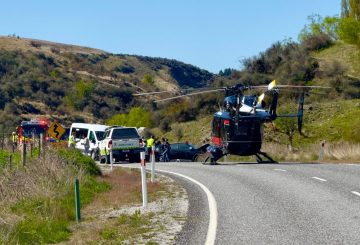周四,Northland庆祝了横跨Brynderwyns的1号国道在封锁四个月后重新开放,Brynderwyns是通往新西兰其他地区的主要通道。高速公路上挤满了重型卡车、通勤者和商务旅客,他们乐于避开他们一直使用的绕行路线。
常客之一,川川亨特之星酒店的所有者曼普雷特·布拉尔对重新开放表示兴奋。他形容绕行路线既累又耗时,尤其是在卡车里装载库存时。
旺格雷的凯瑟琳·帕拉哈因封锁而停止前往奥克兰的旅行,她也对重新开放感到兴奋。旺加雷市长文斯·科库鲁洛和凯帕拉市长克雷格·杰普森驱车前往观景台,庆祝该地区与全国其他地区重新建立联系。他们承认卡车司机在封锁期间面临的困难及其对该地区的情感和经济上的严重影响。
重新开放也让位于1号国道上的凯瓦卡镇的企业松了一口气。封锁使Eutopia Café的收入从第一天起下降了50%。预计重新开放将为北方带来活力,并对企业产生重大影响。
但是,在关闭期间,怀普的企业却有不同的经历。该镇成为游客的繁忙停留地,这对像怀普中央这样的企业有利。经理宝拉·麦克莱恩希望他们在此期间获得的一些客户能够继续光顾。
由于2022年2月气旋加布里埃尔引发的重大山体滑坡,横跨布林德温的1号国道最初关闭了两个月。从今年2月26日开始,这条道路再次封闭,以便进行更大规模的施工。就在马塔里基周末之前,重新开放的时间比预期的要早。道路工程涉及拆除和支撑高速公路上方的大部分山坡。该工程的初始预算刚刚超过6000万美元,但由于额外的山体滑坡和其他因素,该预算增加到8400万美元。
由于山体滑坡,穿过曼加穆卡峡谷的1号国道的另一段路段仍然关闭,预计将在圣诞节前重新开放。



















































-360x245.jpg)









